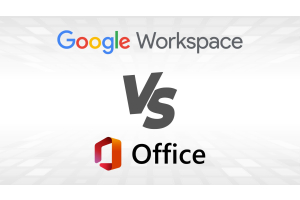When Does Office 2016 Support End and What Problems Can It Cause?
Office 2016 support has come to an end, and this change could impact many users and businesses still relying on this version of Microsoft Office. In this article, we’ll explain exactly when Office 2016 support ends, what the implications are of continuing to use unsupported software, and what steps you can take to avoid potential issues.
When Does Office 2016 Support End?
Microsoft offers two types of support for its products: Mainstream support and Extended support. Mainstream support for Office 2016 ended in October 2020, but Extended support, which includes security updates, remained active until October 14, 2025. This means that after this date, Microsoft will no longer provide security patches, bug fixes, or updates.
What Does the End of Extended Support Mean?
When software reaches the end of its support, it no longer receives security updates or bug fixes, making it vulnerable to cyberattacks and technical issues. This is particularly concerning for businesses, as an insecure system can put sensitive data at risk, compromise system integrity, and increase maintenance costs.
Problems You Could Face Using Office 2016 Without Support
Continuing to use Office 2016 after the end of extended support exposes you to several potential issues. Below are some of the most common and critical problems:
1. Vulnerability to Security Threats
One of the main concerns is the lack of security patches. Cybercriminals are constantly looking for vulnerabilities in outdated software, and without regular updates from Microsoft, Office 2016 could become an easy target for malicious attacks. This could include anything from data theft to ransomware installation.
2. Limited Compatibility with Other Programs
As software continues to evolve, newer programs may not be compatible with older versions of Office. This could affect your ability to open or share files correctly, especially when collaborating with others who are using more recent versions of Office or cloud-based software.
3. Lack of Technical Support
After the end of extended support, Microsoft will no longer provide technical assistance for issues related to Office 2016. This means that if you encounter any errors or malfunctions, you won’t be able to rely on official Microsoft support, which could prolong system downtime or delay the resolution of critical issues.
4. Loss of Functionality
Microsoft continues to add new features and functionality to its latest products. If you continue using Office 2016, you’ll miss out on key productivity improvements, cloud integration, and collaborative tools that are available in newer versions like Office 2021 and Microsoft 365.
How Does the End of Office 2016 Support Affect Businesses?
Businesses are particularly vulnerable when using unsupported software because they face higher risks in terms of data security and business operations. The cost of a cyberattack can be devastating, both financially and reputationally. Additionally, the increase in technical failures or compatibility issues could disrupt workflows, affecting overall productivity and business performance.
Some of the most concerning consequences include:
- Incompatibility with new cloud solutions.
- Increased downtime due to unresolved errors.
- Fines for failing to comply with data security regulations, in case a data breach affects personal or financial information.


What Are Your Options After the End of Support?
Fortunately, there are several alternatives you can consider to keep your systems secure and up to date:
1. Upgrade to Office 2021
One of the simplest options is to upgrade to Office 2021, the latest version available from Microsoft. Although it doesn’t include the advanced features of Microsoft 365, it’s a more traditional option that doesn’t require a subscription and offers security updates for several years.
2. Migrate to Microsoft 365
If you’re looking for more flexibility and advanced collaborative tools, Microsoft 365 (formerly Office 365) is an excellent option. It offers cloud storage, access to the latest Office applications, and continuous updates at no extra cost. Plus, it allows you to work from any device with an internet connection, which is key for remote work.
3. Use Free Alternatives
There are several free and open-source alternatives, such as LibreOffice or Google Workspace, which can cover some of your needs if you don’t want to continue using Microsoft products. However, it’s important to consider the potential limitations in compatibility and functionality compared to Microsoft solutions.


Frequently Asked Questions
Can I continue using Office 2016 after support ends?
Yes, you can continue using it, but it’s not recommended as you’ll be more vulnerable to security threats and compatibility issues.
Which is better: Office 2021 or Microsoft 365?
It depends on your needs. If you prefer a one-time payment and don’t need cloud features, Office 2021 is a good option. If you want continuous updates and access to the latest tools, Microsoft 365 is the best alternative.
Is it difficult to migrate from Office 2016 to Microsoft 365?
No, the process is simple. Microsoft provides tools and guides to make the transition easy and ensure your files and settings remain intact.
Final Thoughts
In summary, the end of support for Office 2016 can bring significant risks for those who don’t update their software. Security threats, compatibility issues, and loss of functionality are just some of the problems you could face. While upgrading to a newer version of Office or migrating to Microsoft 365 requires an investment, the advantages in terms of security and productivity make it a smart decision to keep your system up to date and protected.




